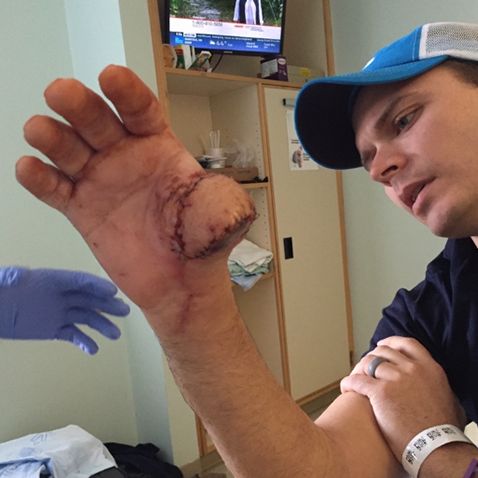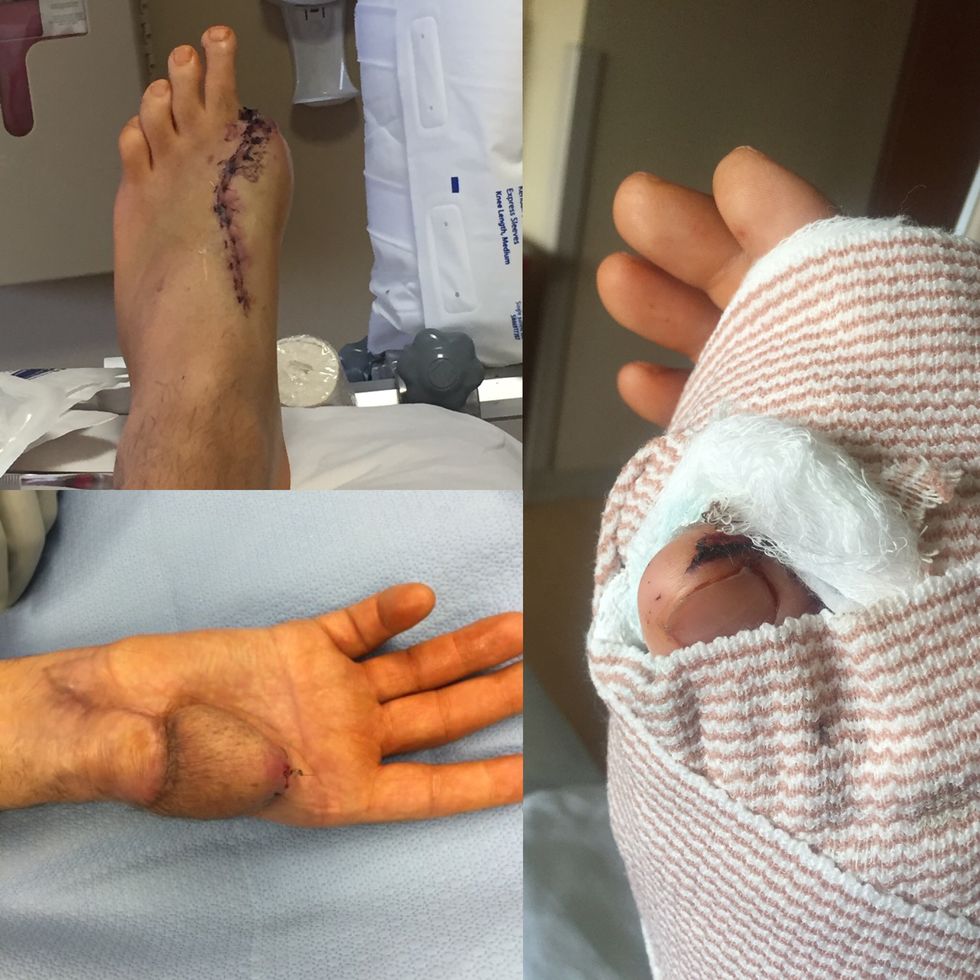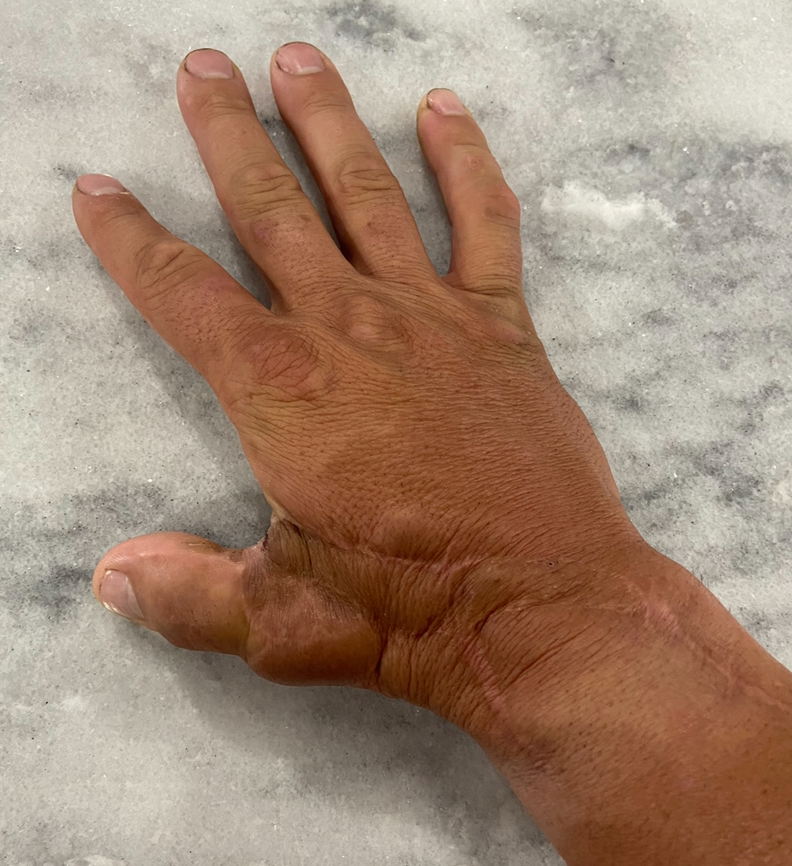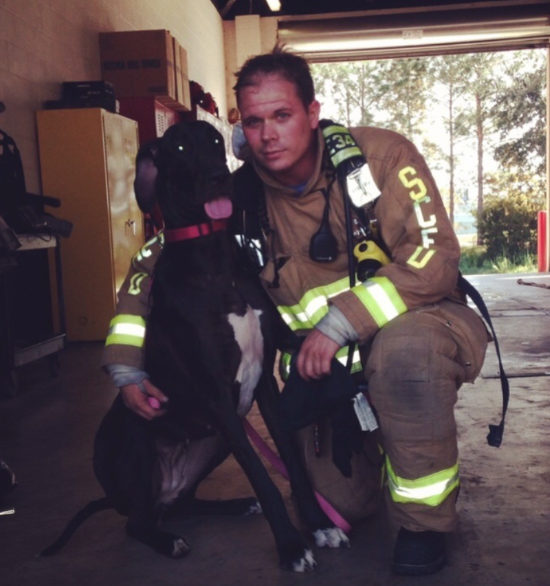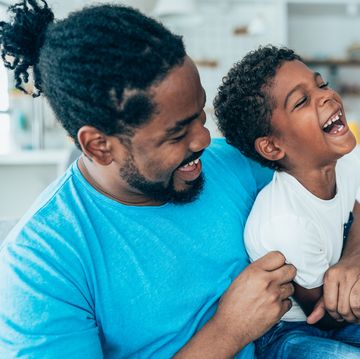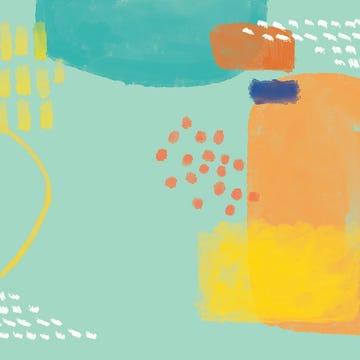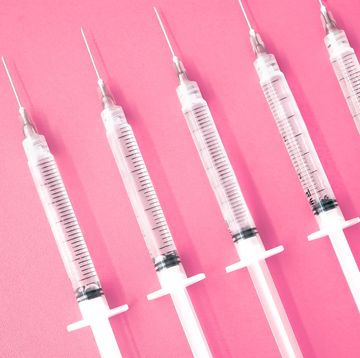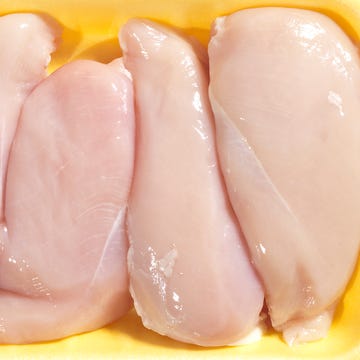Warning: This story contains graphic images.
As a firefighter based in Florida, Josh Baker spends his days responding to emergencies, advocating for fire safety, and protecting citizens from harm. He never thought that he would fall victim to an at-home firework injury, but that's exactly what happened on December 19, 2015.
"We were lighting mortars [an artillery shell firework] off the back dock of a neighbor's house, and I noticed that the mortar was placed upside down in the tube. When my friend lit it, the tube fell over and I reached down to correct it," Baker tells Prevention.com. "That's when I heard it ignite, so I pulled my hand back immediately."
Unfortunately, it was too late, and the mortar, which usually travels 80-90 feet in the air, exploded right where Baker's thumb had been. "It partially amputated my right thumb. I could see through my hand and thought, 'This isn't going to be good,'" Baker recalls. As a firefighter, Baker is equipped to handle emergencies, so he quickly tied his belt around his arm so he could stop the bleeding and remain conscious. He instructed his friends to call 911.
"Firework injuries are very common," says Brett Lewellyn, M.D., orthopedic surgeon at Orlando Health. There were about 10,000 firework related injuries last year, with 12 deaths from firework use/misuse, according to the Consumer Product Safety Commission 2019 firework injury report. About 36% of those injuries occurred in children (15 years old and younger), most commonly between ages 1-5.
Approximately 70% of all firework injuries occur around Independence Day, says Lewellyn, and between June 21 and July 21. Most of the time, those admitted to the hospital for a firework injury are discharged the same day, but some injuries can he very serious, he says. "I was on call for the July Fourth holiday season two years ago, and we operated on 14 blast injuries from firework-related injuries," Lewellyn recalls. "Of those 14 patients, eight people lost at least one finger and three patients lost their entire hand."
Baker, who called out of work at the firehouse the day he was injured, was brought to an Orlando trauma center by his own fire crew. At the hospital, he underwent a procedure to reattach his thumb to his hand, but it didn't survive.
In February 2016, Baker visited the The Johns Hopkins Hospital in Baltimore, MD, where he had his thumb fully amputated. "They took a piece of my forearm with nerve endings and blood vessels and put it where my thumb would be," he says. "From there, it healed, but I continued to have issues with my hands while working and I kept blowing out the incision."
Baker decided to have a toe-to-thumb transfer, in which they amputated his big toe and reattached it where his thumb would be. "In August 2016, I went through six hours of surgeries with two different surgeons—one working on my foot and one on my hand," he says. "Shortly after two weeks, I went home and started rehab."
The determined firefighter made it his goal to return to work on September 11, 2016—and he did exactly that. Today, he's made a full recovery and continues to serve as a firefighter, in addition to his many other interests that include working on houses, chartering boats, and riding horses. He didn't lose any mobility or coordination. "The only thing I can't do is touch my right thumb to my last two fingers because they pinned my joint when they initially reattached my thumb," he says.
Still, Baker considers himself lucky and now warns others about firework safety. "As a fireman, we don't condone setting off fireworks," he says. "We know people are going to do it anyway, but there are precautions you can take to prevent injury."
How to prevent a firework injury
Ultimately, Baker stresses that fireworks are completely unpredictable, even when you follow safety guidelines. "No matter how safe you think you're being and what kind of training you have, it doesn't matter," he says. "A firework injury can happen in a blink of an eye and can change your life forever."
"There is no way to completely prevent a firework injury except to not use them and go to public displays instead," Lewellyn says. If you are going to use fireworks, he recommends following a few safety rules:
- Always supervise your children with fireworks. Do not give any child under the age of six any type of firework, including sparklers. Sparklers can reach a temperature of 2,000°F and can burn through metal, so they should not be given to young children. Also, make sure that all children are far away from where fireworks are being lit.
- Never use alcohol or drugs while lighting any fireworks.
- Never hold any type of firework and try to light it.
- Ensure aerial fireworks are being lit from a tube with a solid base, so it doesn't tip over.
- Have a working water hose and a bucket of water nearby where fireworks are being lit.
- If a firework does not detonate, do not try to pick it up or move the canister from where it was fired. Dowse it with water from a bucket of water. Wait five minutes, and then remove it.
- Never try to relight a firework that has already been lit or relight a firework that did not detonate.
If you are injured by a firework and have a minor burn that's slightly red and did not break the skin, Lewellyn recommends applying aloe to the affected area. "Any severe injury, such as loss of consciousness or open wounds, call 911 and wait for medical personnel to arrive."
Baker stresses that, no matter how prepared or qualified you may think you are to light fireworks, you have to be mindful of safety procedures and the risks. "Many of us may have a Superman mentality or feel that something like this could never happen to us, but when it comes to explosives, they are completely unpredictable, and anyone can fall victim," Baker says. "I never thought it would be me, but a reaction to a situation I was in led to an injury that has changed my life."
Support from readers like you helps us do our best work. Go here to subscribe to Prevention and get 12 FREE gifts. And sign up for our FREE newsletter here for daily health, nutrition, and fitness advice.

Currently an assistant editor at Prevention.com, Nicol is a Manhattan-based journalist who specializes in health, wellness, beauty, fashion, business, and lifestyle. Her work has appeared in Women’s Health, Good Housekeeping, Woman’s Day, Houston Chronicle, Business Insider, INSIDER, Everyday Health, and more. When Nicol isn't writing, she loves trying new workout classes, testing out the latest face mask, and traveling. Follow her on Instagram for the latest on health, wellness, and lifestyle.
